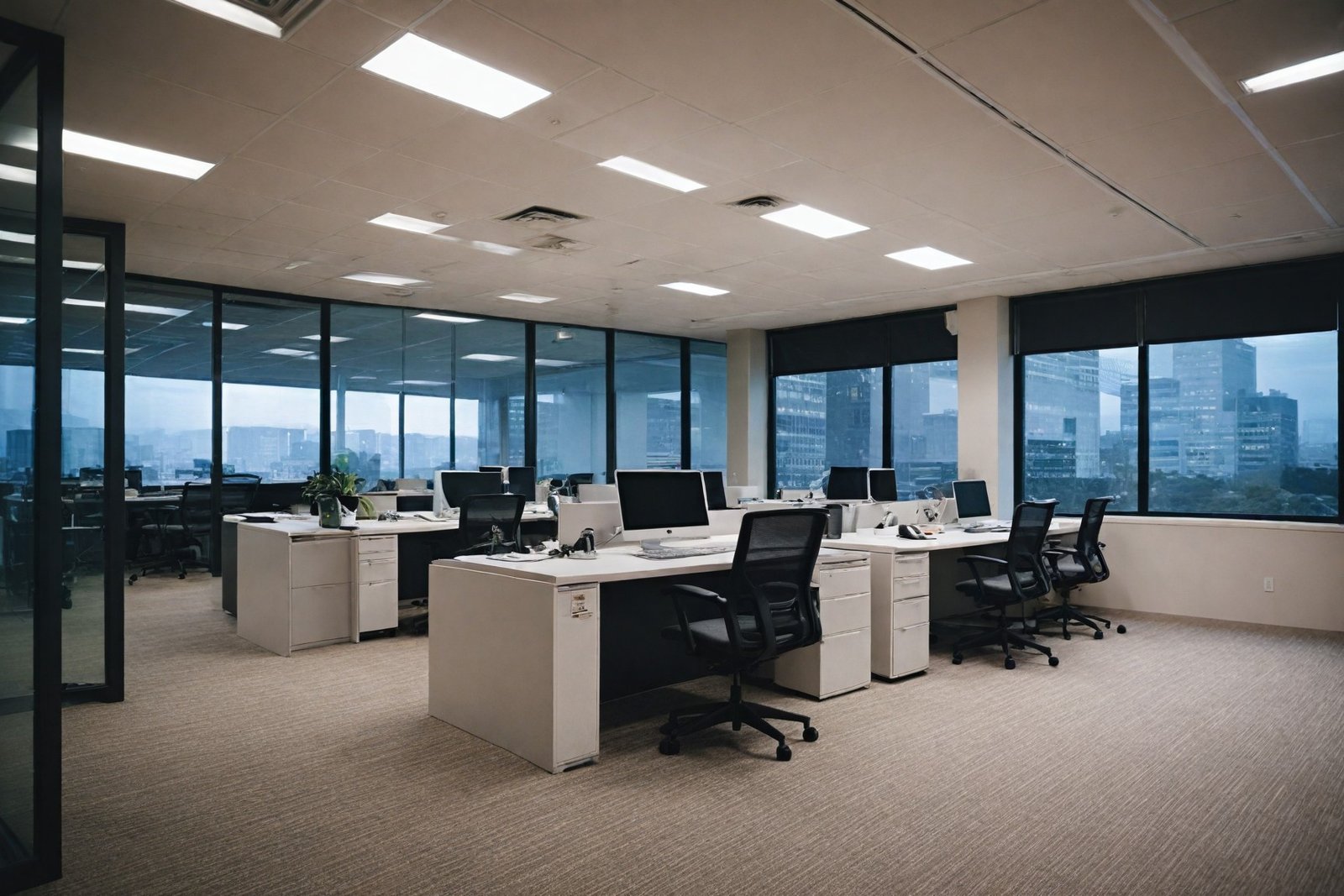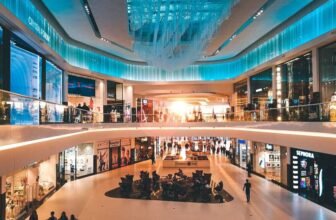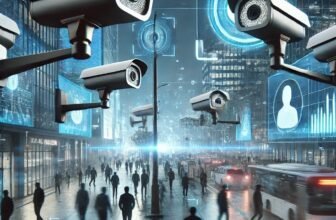
Why Multi-Sensory Workspaces Are the Next Big Trend in Office Design
Imagine walking into an office where soft instrumental music hums gently in the background, natural sunlight filters through leafy indoor plants, the scent of eucalyptus lingers subtly in the air, and ergonomic furniture molds perfectly to your form. A space where every detail is designed not just for utility, but for experience. Welcome to the world of multi-sensory workspaces, the new frontier of office design.
In an age where employee well-being, creativity, and productivity are more important than ever, companies are rethinking the conventional office model. The result? Workspaces that speak to all five senses. This isn’t just about looking good, it’s about feeling good, smelling good, sounding good, and even tasting good. Let’s explore what multi-sensory workspace design really means, why it’s trending, and how it can be implemented beautifully and effectively.
What Is a Multi-Sensory Workspace?
A multi-sensory workspace is an office environment intentionally designed to stimulate multiple human senses, sight, sound, smell, touch, and sometimes even taste. It goes beyond aesthetics and functionality to create an immersive environment that influences mood, behavior, and performance.
While traditional office designs focus mostly on visual appeal and functional layout, multi-sensory workspaces incorporate a broader sensory strategy. The goal is to create an environment that enhances cognitive function, reduces stress, boosts morale, and supports diverse working styles.
The Five Senses in Office Design:
-
Sight – Colors, lighting, visual decor, and biophilia.
-
Sound – Acoustic treatments, soundscapes, ambient music.
-
Smell – Aromatherapy, clean air systems, plants.
-
Touch – Textures, materials, temperature, ergonomic furniture.
-
Taste – Complimentary snacks, beverages, breakroom experiences.
Why Multi-Sensory Workspaces Are the Future of Office Design
1. The Rise of Employee-Centric Design
Post-pandemic work culture has shifted focus toward mental health, work-life balance, and holistic well-being. Employees are seeking work environments that feel less sterile and more human. Multi-sensory design supports this shift by creating a nourishing, emotionally intelligent workspace.
2. Neuroscience Supports It
Our brains are wired to respond positively to sensory stimulation. Multisensory environments activate different parts of the brain, improving concentration, creativity, and emotional regulation. Research shows that environments that cater to multiple senses can improve memory retention by up to 75%.
3. Improved Productivity and Creativity
Sensory environments help reduce distractions and mental fatigue. Natural lighting, calming sounds, and pleasant aromas can boost focus and reduce cortisol levels. Texture and spatial variety can foster creativity and encourage innovative thinking.
4. Diversity and Inclusion
Not everyone works the same way. Some thrive in silence, others need movement or background sound. Multi-sensory spaces offer flexibility for neurodivergent individuals, introverts, extroverts, and everyone in between.
5. Talent Attraction and Retention
Top talent today evaluates potential employers not just on salary, but on workplace culture and environment. A thoughtfully designed, sensory-rich office signals that a company values innovation and employee well-being.
Multi-Sensory Workspace Design Ideas
Ready to bring this trend into your office? Here are some practical and inspiring design ideas broken down by sense.
Sight: The Visual Layer
-
Biophilic Design: Incorporate natural elements like living walls, indoor plants, and water features. Studies show biophilia reduces stress and enhances creativity.
-
Circadian Lighting: Use dynamic lighting systems that mimic natural daylight patterns to support focus and energy.
-
Color Psychology: Choose colors intentionally, blue for focus, green for calm, yellow for energy, and neutral tones for grounding.
-
Visual Zoning: Use partitions, rugs, or lighting to create distinct areas for collaboration, focus, or relaxation.
Sound: Acoustics and Ambience
-
Acoustic Panels: Reduce noise distraction with panels, ceiling baffles, and carpeting.
-
Soundscapes: Incorporate natural soundtracks like birdsong, flowing water, or forest ambiances.
-
Quiet Pods: Create phone booths or silent rooms for focused work or decompressing.
-
Personal Audio Zones: Let employees customize their auditory environment with personal speakers or noise-canceling headphones.
Smell: Olfactory Engagement
-
Essential Oil Diffusers: Use calming scents like lavender for break areas, peppermint for focus zones, or citrus for energy in meeting rooms.
-
Air Purification: Clean air isn’t just healthier, it smells better. Use purifiers and indoor plants to keep the air fresh.
-
Scent Branding: Some companies develop signature scents to reflect brand identity and evoke emotional connection.
Touch: Tactile Comfort
-
Varied Textures: Incorporate a mix of materials, wood, leather, felt, stone, to keep surfaces interesting and comforting.
-
Ergonomic Furniture: Chairs, desks, and lounges should support good posture and physical ease.
-
Thermal Comfort: Offer individual control over heating or cooling, or use zoned HVAC to accommodate preferences.
-
Soft Furnishings: Cozy up lounge areas with throw pillows, soft rugs, and comfortable seating.
Taste: Culinary Elements
-
Healthy Snack Bars: Provide fruit, nuts, and herbal teas to stimulate taste and support brain function.
-
Coffee Culture: Invest in quality coffee machines and create a café-style zone where people can gather and connect.
-
Flavor Stations: Infuse water with herbs or fruit; offer rotating flavors to add novelty.
Real-World Examples of Multi-Sensory Workspaces
1. Google – Zurich Office
Google’s Zurich office is a playground for the senses. Employees can work from gondolas, lounge in aquarium-themed rooms, or brainstorm in jungle-inspired meeting spaces. Each area has unique lighting, textures, and ambient sounds.
2. Microsoft – Amsterdam
Microsoft’s Amsterdam HQ uses scent diffusers, biophilic elements, and customizable lighting to offer employees a highly personalized experience. Their quiet zones are soundproofed and feature low lighting and soft furnishings for maximum comfort.
3. Airbnb – San Francisco
Airbnb’s office design is based on real Airbnb listings around the world. Employees can work from cozy “home” setups complete with textured textiles, curated scents, and ambient playlists inspired by global cultures.
4. Steelcase – Grand Rapids Campus
Steelcase’s headquarters is a living lab for sensory office design. They combine tactile furniture, interactive light walls, varied flooring textures, and even a scent strategy tied to their branded experiences.
5. Innocent Drinks – London HQ
Nicknamed “Fruit Towers,” this quirky office includes picnic-style meeting rooms, a fully stocked smoothie bar, plant-covered walls, and whimsical sounds, like bird tweets and bells, in communal spaces.
Implementing Multi-Sensory Design: A Step-by-Step Approach
Here’s how any company, big or small, can begin embracing this design trend:
Step 1: Audit Your Current Environment
Walk through your office with your senses in mind. What do you see, hear, smell, feel, and taste? Identify pain points and opportunities.
Step 2: Engage Employees
Survey your team about what sensory features they’d value. Some may love ambient noise, others might find it distracting. Tailor your approach to your culture.
Step 3: Start Small
You don’t need a massive redesign. Start by upgrading lighting, adding plants, or introducing aromatherapy in break rooms. Sensory enhancements can be low-cost and high-impact.
Step 4: Mix Zones
Offer a variety of sensory experiences across the office. Some zones can be high-energy with vibrant colors and music, while others remain quiet and minimalistic.
Step 5: Iterate and Evolve
Treat your workspace like a living system. Gather feedback, experiment with different sensory elements, and make continuous improvements.
Challenges to Consider
While the benefits are numerous, multi-sensory design does come with challenges:
-
Sensory Overload: Too much stimulation can backfire. Balance is key.
-
Subjectivity: One person’s relaxing lavender scent might be another’s headache trigger.
-
Budget: Some changes require investment. But many upgrades can be phased in gradually.
The solution lies in flexibility and choice. Allowing employees to customize their own micro-environments, like personal scent diffusers or lighting controls, can ensure inclusivity.
The Takeaway: Designing for the Whole Human
We spend nearly a third of our lives at work. Shouldn’t those hours nourish us, not just intellectually, but emotionally and physically?
Multi-sensory workspace design isn’t a fleeting trend; it’s a paradigm shift. It represents a more human-centered approach to work, one that acknowledges that people are complex, sensory-driven beings, not machines.
As we move into the future of work, the offices that thrive won’t be the flashiest or the most high-tech. They’ll be the ones that feel good to be in, offices that inspire not just what we do, but how we feel while doing it.
Welcome to the age of the multi-sensory workplace. It smells like success, and maybe a little bit of lavender.





